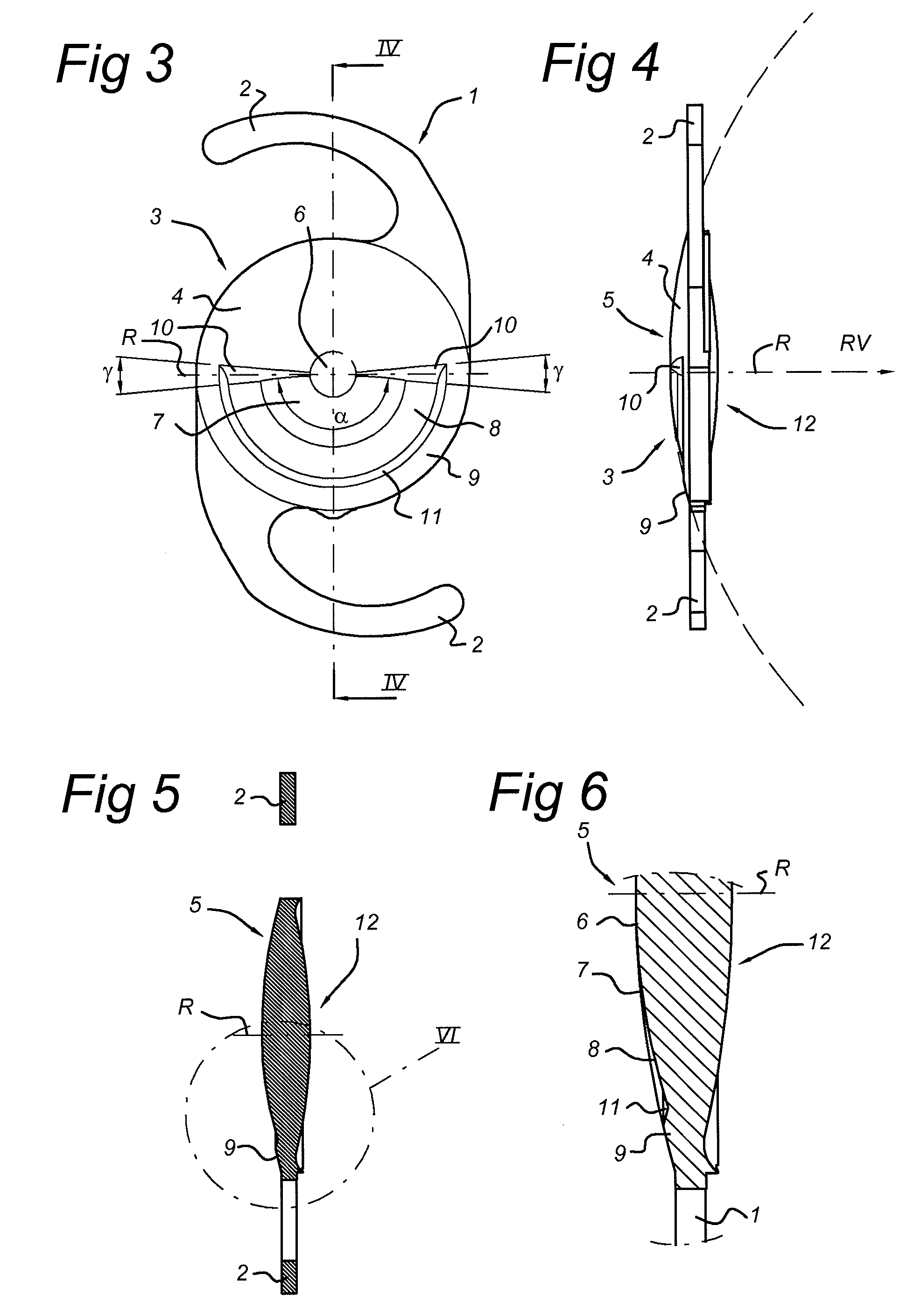Ophthalmic lens with optical sectors
a technology of optical sectors and ophthalmology, applied in the field of ophthalmology, can solve the problems of ghost images and blur, further complicated, loss of contrast sensitivity, etc., and achieve the effects of maximizing light energy, and reducing blur and halo
- Summary
- Abstract
- Description
- Claims
- Application Information
AI Technical Summary
Benefits of technology
Problems solved by technology
Method used
Image
Examples
examples
[0127]Several lens configurations based on FIGS. 3-8 are presented below, for an IOL. For several pupil diameters, the area covered in mm2 by the various sectors (zones or regions) are shown. In several graphs, the theoretically determined, relative light energy based on the area covered by the various sectors is shown. (Sector Radius Central refers to the radius of the central part). These theoretical example calculation were done as if the lens has no radius of curvature, i.e. a flat surface. This method has been chosen to simplify the calculation because the curvature of the lens surface will change with the optical power. The equations for calculating the surface area of a transition area used in the embodiments below are as follows.
APupil=π4Dpupil2ANear=αnear·π360·4(Dpupil2-Ddist2)ADist=αfar·π360·4(Dpupil2-Ddist2)+π4Ddist2ATransition=αtrans·π360·4(Dpupil2-Ddist2)
[0128]It was found that these values can also be determined using measurements. To that end, an instrument called PMT...
example 1
[0155]Maximum acceleration for the cutting tool:
amax=10 m / sec2
[0156]Spindle speed 1200 rev / min (20 rev / sec) with a transition angle of 20 degrees.
Δt=12020360=2.78·10-3secΔt2=1.39·10-3secFor0≤t1.39·10-3:s(t)=5t2For1.39·10-3≤t2.78·10-3:s(t)=9.66·10-6+1.39·10-3(t-1.39·10-3)-5(t-1.39·10-3)2
example 2
[0157]Spindle speed N=15 rev / sec. Δs=0.05 mm, amax=10 m / sec2
Δt=2Δsamax=0.0045secφ=N·360·2Δsamax=15*360*0.0045=24degrees
[0158]It's also possible to make the transition by using other less optimal profiles. For example a transition profile described by the cosine function could be used.
s(t)=A·cos(ωt)
[0159]With A the amplitude and w the angular frequency. The transition starts at ω=0 and ends at ω=π. The acceleration experienced when following this cosine profile is:
a=−A·ω2 cos(ωt)
[0160]The maximum acceleration in the cosine profile will occur at ω=0 and at ω=π in the opposite direction. The absolute magnitude of the acceleration is therefore:
acos—max=A·ω2
[0161]Because the maximum acceleration available or allowed for the turning machine is only used during a very small trajectory in the transition profile, the achieved displacement for the fast tool is substantially less than the described optimal transition profile in this document.
[0162]For comparison purposes, a cosine transition...
PUM
 Login to View More
Login to View More Abstract
Description
Claims
Application Information
 Login to View More
Login to View More - R&D
- Intellectual Property
- Life Sciences
- Materials
- Tech Scout
- Unparalleled Data Quality
- Higher Quality Content
- 60% Fewer Hallucinations
Browse by: Latest US Patents, China's latest patents, Technical Efficacy Thesaurus, Application Domain, Technology Topic, Popular Technical Reports.
© 2025 PatSnap. All rights reserved.Legal|Privacy policy|Modern Slavery Act Transparency Statement|Sitemap|About US| Contact US: help@patsnap.com



